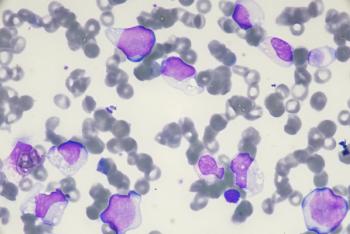
Biomarkers: Top challenges and opportunities in managed care
Biomarkers, if used appropriately, could ensure patients receive the appropriate treatment sooner, and that they have better outcomes at reduced costs. But despite the potential and expanding capabilities, barriers to full-fledged use remain.
Biomarkers, if used appropriately, could ensure patients are diagnosed earlier, that they are matched to the appropriate treatment sooner, and that they have better outcomes at reduced costs. But despite the potential and expanding capabilities, barriers to full-fledged use remain.
During their October 5 session, “Biomarkers and Treatment Decision-Making: Focus on Rheumatoid Arthritis,” at the Academy of Managed Care Pharmacy (AMCP) Nexus 2016, in National Harbor, Maryland, three presenters explored the opportunities and challenges biomarkers present, and the role they could play in the future of healthcare delivery.
Brixner
Diana Brixner, RPh, PhD, FAMCP, professor in the department of pharmacotherapy at the University of Utah, who co-presented with John Watkins, PharmD, MPH, BCPS, pharmacy manager, formulary development, at Premera Blue Cross, and Grace C. Wright, MD, PhD, clinical associate professor of medicine at New York University Langone Medical Center, said biomarkers go hand-in-hand with personalized medicine.
It’s about personalizing medication choices and treatment decisions to make sure patients get the right drug at the right time at the right cost, she said.
For example, a physician or payer could use biomarkers or other diagnostic tests to determine how well a particular segment will respond to therapy, and whether that segment will have minimal adverse events.
“From a managed care perspective, we don’t want to invest money in a drug that we know, based on genetic information, is not going to work,” said Brixner. “Segmenting the population is very important.”
Many biomarker tests are currently available, and they are becoming more sophisticated and increasingly used as an additional tool used to determine disease progression and potential course of treatment, she said.
Some examples include:
· Magnetic resonance imaging
· Serum chemistries
· Autoantibodies
· Bone density measurement
· Pulmonary function tests
· Genetic markers
Brixner said biomarkers can be split into three categories:
· Diagnostic: Distinguish health vs. disease.
· Prognostic: Predict natural history of disease in absence of further intervention.
· Predictive: Predict an outcome following an intervention (e.g., response or lack of response to a drug).
Some examples include prognostic testing for chemotherapy response (for example, Oncotype DX/adjuvant chemotherapy); and testing for hereditary markers of risk (for example, BRCA1/2 testing/more frequent monitoring and/or surgical options).
Value remains the big question
One of the biggest questions when it comes to biomarkers is how to define value appropriately, said Brixner. For example, what is the best practice for economic modeling of a biomarker that involves pharmacogenetics testing?
“We need to start thinking about this sooner,” Brixner said. “When we look at what’s going down the pipeline and what drugs are coming down the pipeline, we also need to consider are their biomarkers around these drugs to help us make these decisions.”
Of course, cost must be part of the conversation around value. Yet, relatively few of personalized medicine tests have been formally evaluated for their cost effectiveness, said Brixner, noting that over the next five to 10 years, there is going to be a “groundswell” around cost effectiveness.
In general, she said, some of the studies that are available indicate that these diagnostic text could be a “cost-effective approach.”
It’s also critical to identify best practices for clinical evidence, such as by identifying a guideline similar to a clinical guideline that could help physicians and payers determine where biomarkers are best used in guiding therapy and treatment, she said
In addition, Brixner said, there are questions surrounding reimbursement. Not only whether a particular test will be reimbursed, but also, whether a prior authorization that includes the requirement for a diagnostic test is needed before a certain drug can be used in certain situations.
Newsletter
Get the latest industry news, event updates, and more from Managed healthcare Executive.





















































